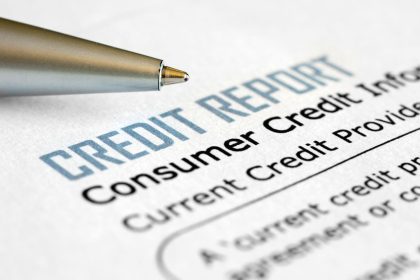More than half of U.S. working adults say they’re behind in retirement savings — including 37 percent who feel “significantly behind,” according to a recent Bankrate survey.
I’m a debt-free millionaire, and soon-to-be retiree who teaches financial freedom habits to those who feel behind in their money goals. Unfortunately, I learned that many people try to catch up in their retirement savings by investing into the stock market before they can really afford to.
While the stock market can be a powerful way to build wealth, it’s not guaranteed you will make money, especially if you are not able to invest long term because your foundational finances are not solid.
Here are five essential steps you should take before making your next investment into the stock market. These habits helped me to save and invest more than $1.7 million before age 40, as a first-generation, Filipino-American woman and self-taught money nerd.
Keep One Month’s Worth of Expenses In Your Regular Checking Account
Referred to as your cash flow cushion, I recommend you keep one month’s worth of living expenses in your regular checking account where you typically pay your bills. This guarantees easy access to cash for everyday expenses without needing to dip into your savings or investments, and allows your bills to run automatically.
Not only does this make it easier to focus on learning the new skills required to be a great investor. It allows you to move away from living paycheck to paycheck by always being ahead of your monthly bills.
Build a ‘Stuff Happens’ Fund In A High-Yield Savings Account
In addition to your cash flow cushion, I recommend stashing one more month worth of expenses in a high-yield savings account. Rather than referring to this as an emergency fund, I refer to it as my “stuff happens” fund because accessing this financial safety net doesn’t have to be a life-or-death event.
It’s safe to assume that unexpected things will happen regularly, even if they’re not serious in nature. Ensuring you have a buffer for unexpected expenses not only provides peace of mind. It ensures you can afford to lose money in your investments without jeopardizing your daily necessities.
I specifically recommend a high-yield savings account because many of them are offering around 5% in interest. This is a way to grow your cash without much risk, as long as the bank is FDIC-insured.
Maintain A Monthly Budgeting Routine For At Least 6 Months
If you are not willing to commit to a monthly budgeting routine for at least six months, it’s unlikely you will have the patience or discipline to become a strategic investor. Understanding your spending habits and controlling your finances are essential in identifying areas where you can afford more investing in the future.
I’ve budgeted consistently every month since 2016 using three basic categories. Because of this consistent habit, I was able to identify extra funds that I could risk in the stock market without worrying about whether or not my bills would get paid. Consistent budgeting is the cornerstone of building a strong financial foundation before you can seriously invest in the stock market.
Eliminate All Credit Card Debt
I often get asked the same question: Do I pay off debt or do I invest? If the type of debt is credit cards, focus on paying off all of it before you invest any more into the stock market.
Credit card debt often comes with high-interest rates, ranging from 15% to 25% or more. Even a well-performing stock portfolio might net only an average annual return of around 7% to 10% — and that’s if you know what you’re doing.
This is a matter of simple math: The interest you’re paying on your credit card debt is likely far outpacing the returns you’d earn from your investments, leading to a net loss in your overall financial situation. Especially as a casual investor, it is unlikely you will earn any returns in the 15% to 25% range in the short term. Once the credit card debt is eliminated, you’ll have even more cash flow to put toward future investments.
Open An Individual Retirement Account
Consider opening an Individual Retirement Account to take advantage of the tax benefits that can help your retirement savings grow more efficiently. Investing in an IRA allows your stock market investments to save hefty taxes and the penalties from withdrawing early. This will encourage you to keep those dollars invested for the decades required to make any meaningful returns.
Investing in the stock market is a risk. It’s even riskier if you don’t have a solid financial foundation. By following these five steps, you can invest in the stock market with the confidence you need to make it a long-term habit, instead of a short-term fix.
Read the full article here






